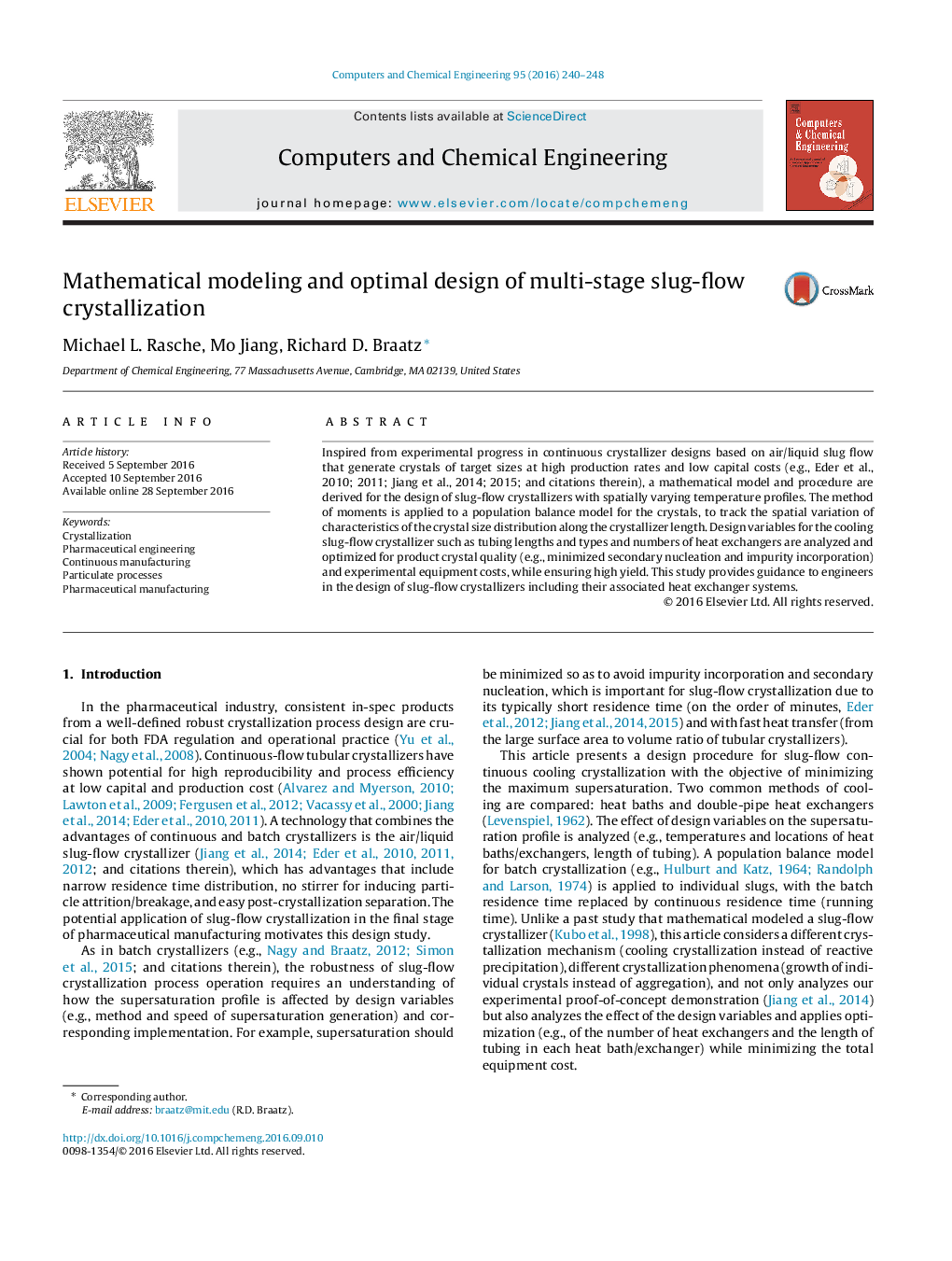| Article ID | Journal | Published Year | Pages | File Type |
|---|---|---|---|---|
| 6469312 | Computers & Chemical Engineering | 2016 | 9 Pages |
Inspired from experimental progress in continuous crystallizer designs based on air/liquid slug flow that generate crystals of target sizes at high production rates and low capital costs (e.g., Eder et al., 2010; 2011; Jiang et al., 2014; 2015; and citations therein), a mathematical model and procedure are derived for the design of slug-flow crystallizers with spatially varying temperature profiles. The method of moments is applied to a population balance model for the crystals, to track the spatial variation of characteristics of the crystal size distribution along the crystallizer length. Design variables for the cooling slug-flow crystallizer such as tubing lengths and types and numbers of heat exchangers are analyzed and optimized for product crystal quality (e.g., minimized secondary nucleation and impurity incorporation) and experimental equipment costs, while ensuring high yield. This study provides guidance to engineers in the design of slug-flow crystallizers including their associated heat exchanger systems.
